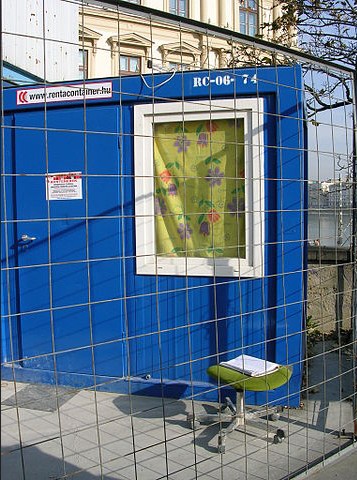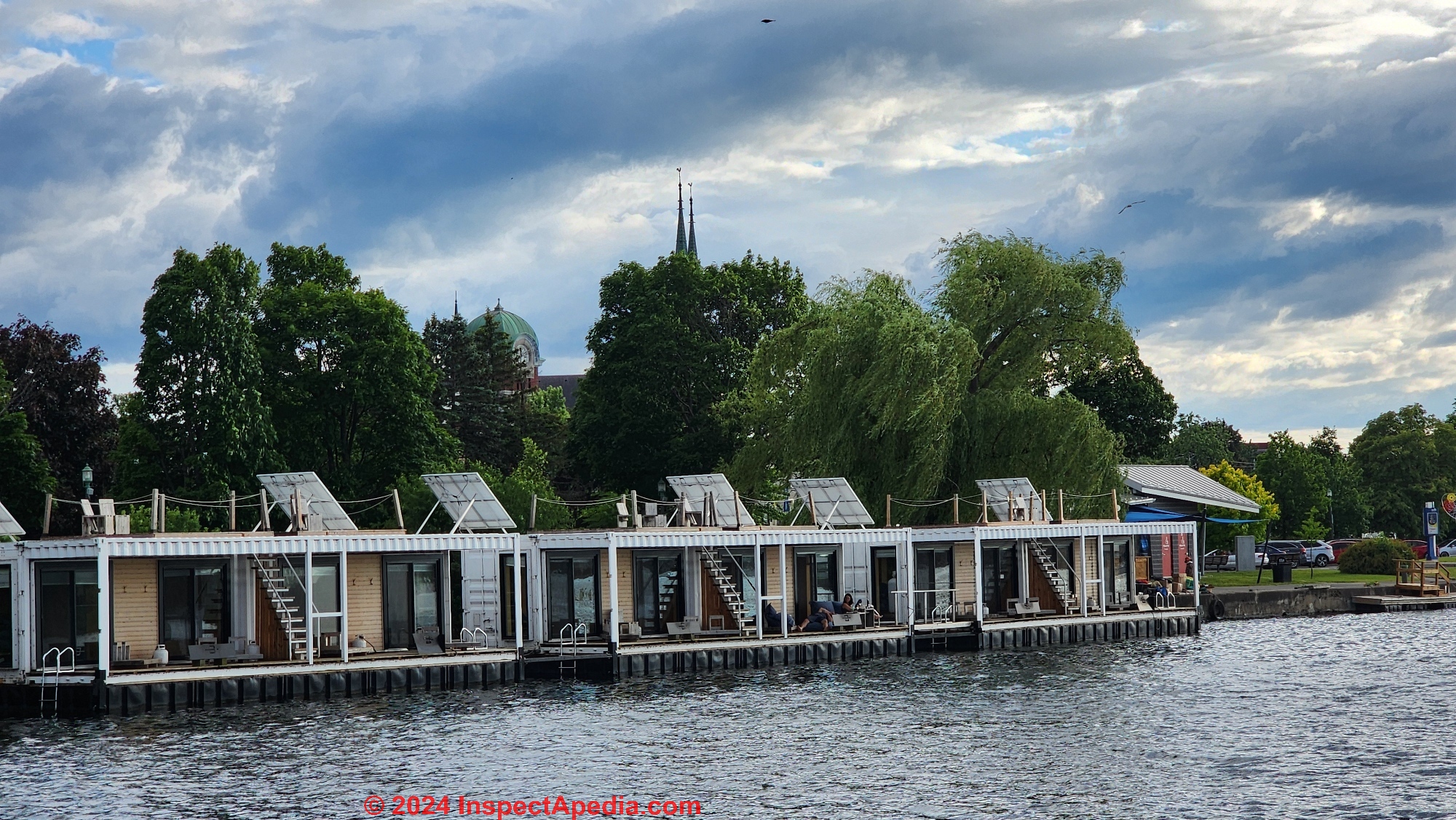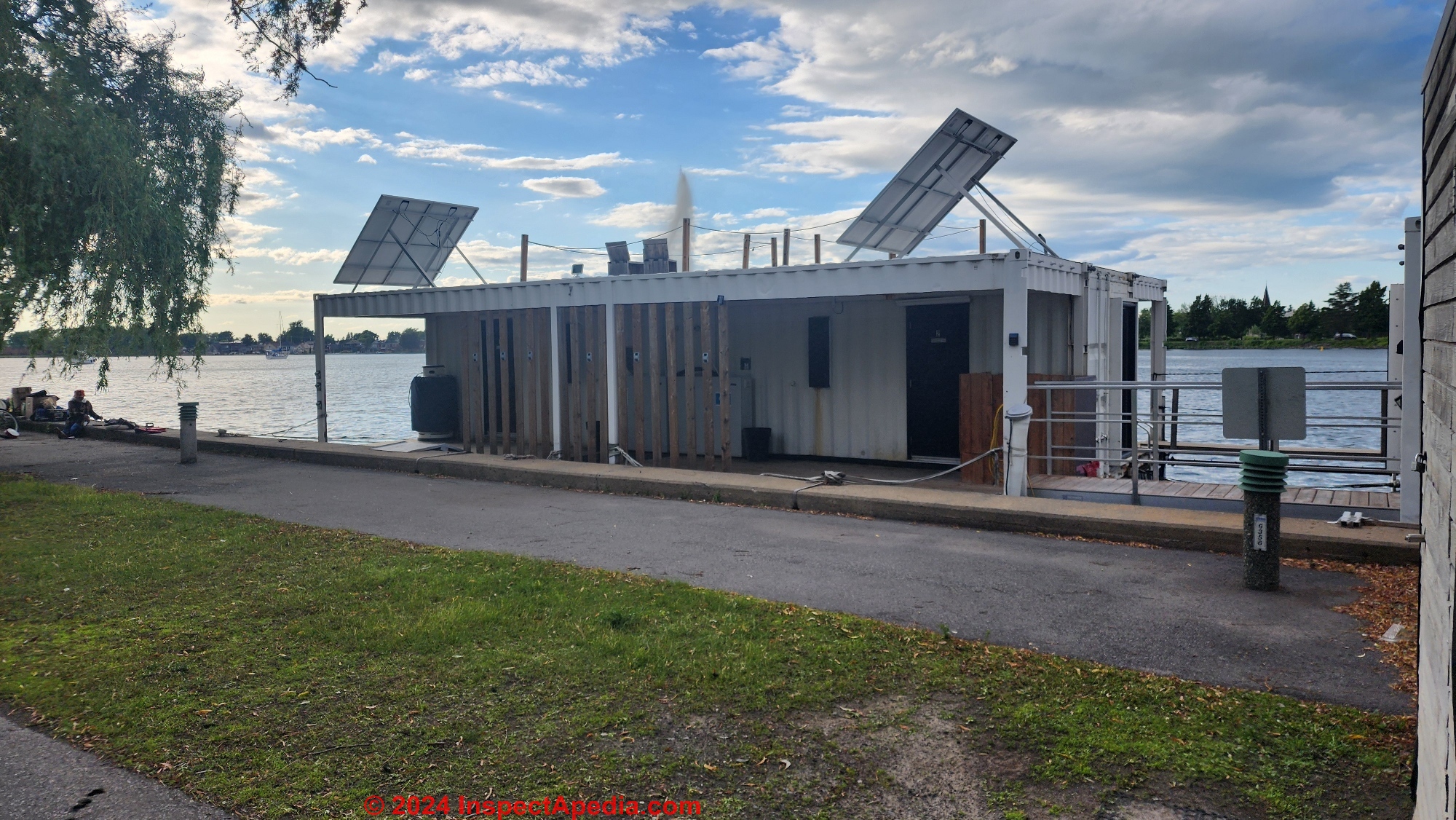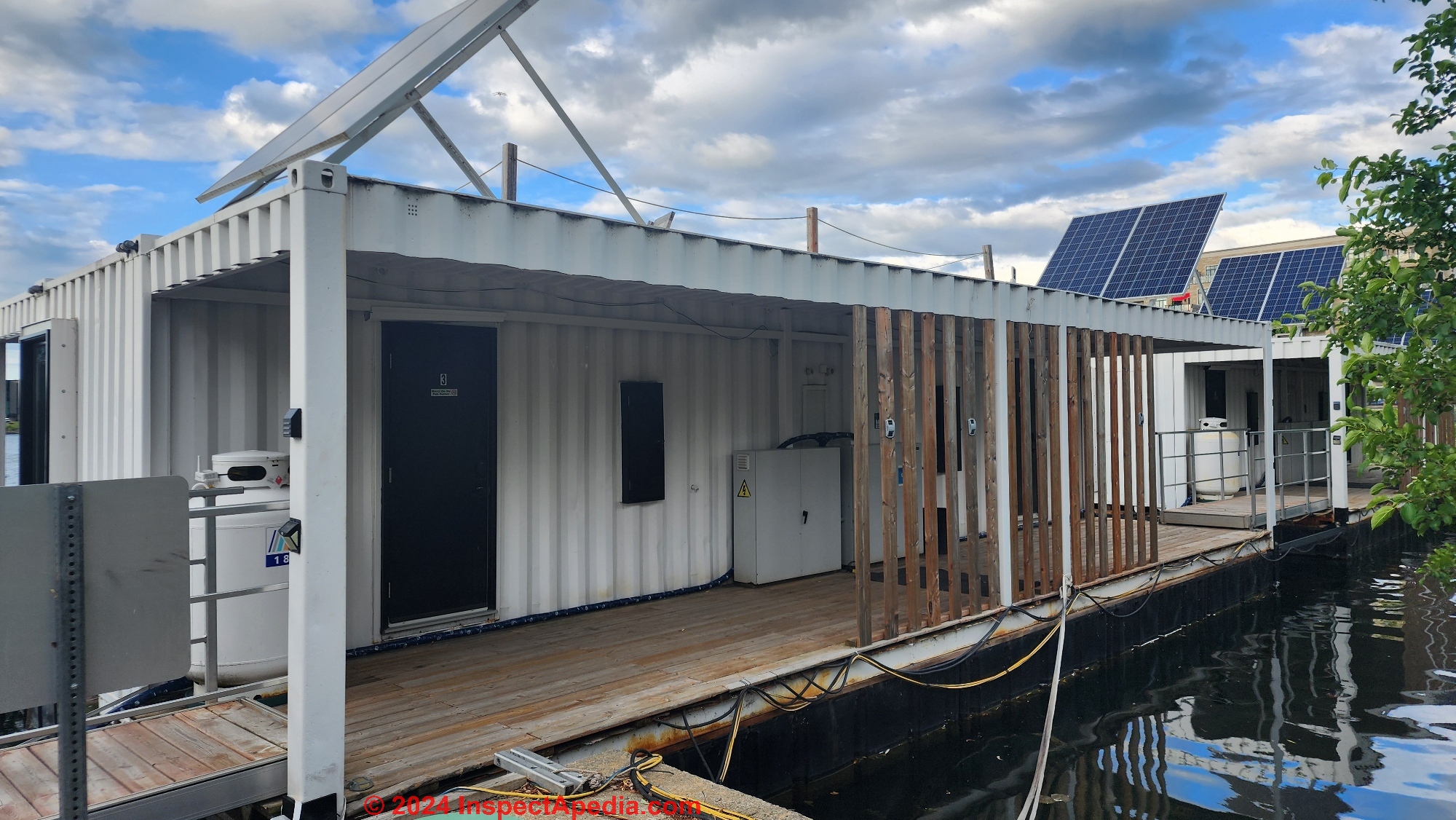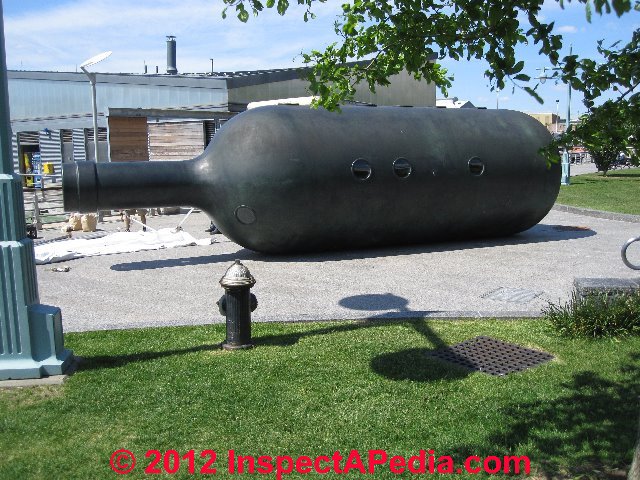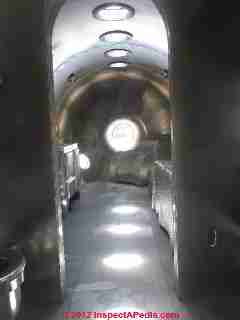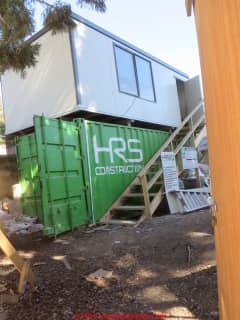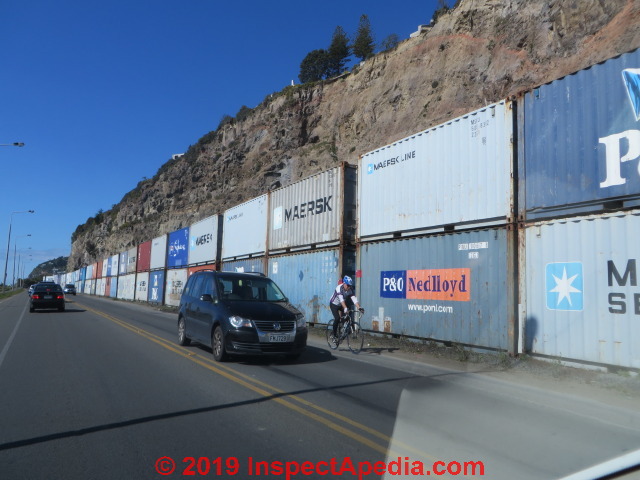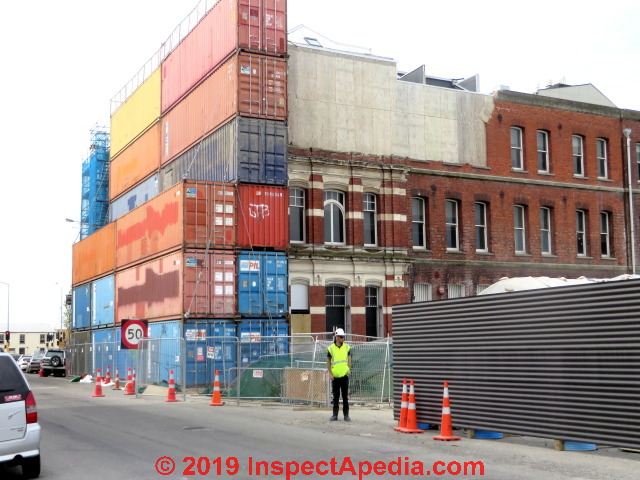 Shipping Container Housing
Shipping Container Housing
For emergency or disaster housing
For permanent housing, offices, retail space, NZ Re-Start shopping mall
- POST a QUESTION or COMMENT about shipping container housing designs, uses, where to buy shipping containers for conversion to a house, how to convert a shipping container to housing, shipping container house inspection & maintenance
Shipping container & similar pre-fab housing: this article describes the use of shipping containers & similar structures as a base for design & provision of emergency or disaster housing, temporary structures, or even permanent homes that can be transported, erected, even stacked on-site where housing is needed in both urban and more remote areas.
We include examples of container based housing designs and we list the factors that should be considered in both cost analysis for container based housing and in project set-up & maintenance.
We provide sources for renting or buying shipping containers new or used for housing or storage or office projects, and we list expert resources, books & documents on container housing architecture & design.
Page top photo: after loss of many buildings due to earthquake damage in Christchurch, New Zealand, builders made extensive use of shipping containers for housing and, as we show above, even for the construction of shopping malls and restaurants.
InspectAPedia tolerates no conflicts of interest. We have no relationship with advertisers, products, or services discussed at this website.
- Daniel Friedman, Publisher/Editor/Author - See WHO ARE WE?
Guide to Shipping Container Housing Designs, Uses, Sources, Inspection & Maintenance
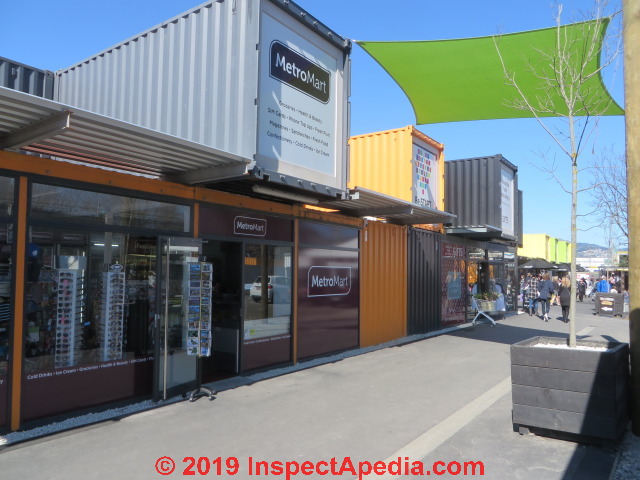 Following Hurricane Sandy in 2012, and further-developing a disaster housing plan that New York City has been working on since 2007, FEMA and New York City officials began plans for a project to test disaster housing units, including designs such as using shipping containers that could be stackable to provide higher density housing in urban areas where otherwise space may be limited.
Following Hurricane Sandy in 2012, and further-developing a disaster housing plan that New York City has been working on since 2007, FEMA and New York City officials began plans for a project to test disaster housing units, including designs such as using shipping containers that could be stackable to provide higher density housing in urban areas where otherwise space may be limited.
The city will construct a prototype disaster housing set-up testing stacked or multi-story units on a parking lot near the Brooklyn Bridge. [1]
But the most-extensive use of shipping containers as housing, retail space, and office space that we have inspected is found throughout New Zealand's South Island, as we illustrate in some of the photos given here.
Article Contents
- SHIPPING CONTAINER HOUSING - CONTENTS: Guide to Shipping Container Housing Designs, Uses, Sources, Inspection & Maintenance -
Temporary or emergency / disaster housing using shipping containers or other designs
- EXAMPLES of Shipping Container & Similar Transportable Unit Housing Designs
- CONTAINER-BASED DISASTER HOUSING Conversion, Transportation & Installation Costs & Considerations
- SHIPPING CONTAINER HOUSE DESIGNS, Tanks & Other Round Structures as a Base for Experimental Design Housing - the Bottle House
- SOURCES of shipping containers for use as or conversion to disaster or other housing
- STANDARDS & CODES for Shipping Containers & Containerized Housing
Examples of Shipping Container & Similar Modular Housing Designs
This office built using a shipping container is an example provided by Wikipedia.
Standard shipping container sizes vary by country, age, and intended use.
Construction material is usually steel (typically COR-ten steel) though there are also (more expensive) aluminum shipping containers.
Generally in the U.S. shipping containers are available in these dimensions:
- Shipping container Length: 20-ft (6.1 m), 40-ft (12.2 m), 45-ft (13.7 m), 48-ft (14.6 m), and 53-ft (16.2 m)
- Shipping container Width: 8 ft.
- Shipping container Height: 9 ft 6 in (2.9 m)
- Shipping container Weight: typically from 2000 to 3000 kg & up for steel shipping containers [2]
Synonyms for shipping container in shipping use include ISO container, Cargon Container, Conex Box.
When used for occupancy or storage, these containers are referred to as Intermodal Steel Building Unit (ISBU) or a GreenCube.[9]
Container-based Disaster Housing Conversion, Transportation & Installation Costs & Considerations
Photos above & below show the "Flotel" in Sallaberry de Valleyfield, near Montreal, Quebec, photographed by the author in June 2024, a creative use of (what sure looks like) shipping containers to build a floating hotel.
OPINION: we found online ads for this hotel at around $200 to $400 CDN per night which seemed expensive for what, on direct inspection looked cramped and in our view, a bit scruffy accomodations.
But indeed, in nice weather it might be fun to jump out of your hotel room right into Lake Saint-Louis!
A number of factors combine to determine the suitability of converted shipping containers as temporary disaster housing or for longer term applications, including:
- Availability of suitable shipping containers
of the proper size and in usable condition. For housing most buyers are currently buying new or nearly-new containers. - Transportation costs
for the shipping container to the location where it is to be modified / adapted - Total costs for modifications
to the shipping container, which of course vary by requirements such as heating & cooling needs.
The New York Times reported that the estimated cost to convert each 40-ft long shipping container into a movable and perhaps stackable house would range between $50,000. & $80,000. U.S.[1]
Adaptation cost may involve extra insulation & cooling where containers are to be used in climates of more extreme cold or hot temperatures. [9] - Installation costs for shipping container based disaster housing, including
- Site work preparation
(foundation space level, provision of ground support plates, site properly drained, access roads or walks) including possible site preparation to permit access to the site by container transportation & lifting or placement equipment (crane or fork lift). - Safe access stairs & railings,
and housing-modified container unit placement, with additional placement costs and access stair costs for stacked units - Connections between the container housing and utilities for electricity
(including electrical grounding), water supply, wastewater disposal; if needed, provision for onsite heating fuel (heating oil, LP gas, natural gas connections).
For some installations there may be both installation time reductions & economies of installation if bathing & toilet facilities can be provided by a number of specialized container units designed for that purpose and shared among housing users.
For example SeaBox provides an expandable 10' x 8' stackable shower unit that can be set up in just 20 minutes. [8] - Energy costs:
shipping containers are not insulated and as steel structures can have considerable heat gain or loss - used as homes the building may have high costs to heat or cool the occupied space. (Veltman 2024) - Transport & assembly costs
Larger dimensioned housing containers may be more costly to transport and stack. - For longer term occupancy,
additional provisions for design, space, stimulii, or other features may be needed to assure that a particular shipping container-based housing installation minimizes issues with privacy, crowding, and related concerns explored by Hall (1976) and others [14] listed by Brandt (2011) who has compiled a thoughtful analysis of the requirements for a successful longer-term housing facility based on containers. [9] - Manufacturers warn of life threatening risks to personnel during lifting & installation
of shipping container units & their connection to mechanical & electrical services; in the urgency of a disaster-related event expert supervision may be needed to reduce the risk of hazards to inexperienced personnel
- Site work preparation
- Maintenance costs for shipping-container based housing or disaster shelters include
- Inspection of leveling jacks & adjustment as needed
- Inspection of electrical & other mechanical systems for safety
- HVAC maintenance & repair
- Plumbing system maintenance & repair
- Inspection for abnormal interior conditions of moisture, mold contamination, leaks
Tanks & Other Round Structures as a Base for Experimental Design Housing - the Bottle House
Our photo of a bottle structure as home (left), Private Passage, a sculpture by Malcolm Cochran, illustrates the wide range of experiment and creativity that has attracted architects and other designers to the adaptation of containers, especially shipping containers, but even a wine bottle as ready-made structures that can be converted into a home.
Properly titled Private Passage, this bottle house was the first permanent public sculpture commissioned as part of Hudson River Park.
The bottle house or Private Passage is on display in Clinton Cove, along what is popularly referred to as the NYC RIver Walk .
Private Passage is a 30 ' x 8’6” diameter wine bottle resting on its side.
The interior along with the portholes form an interpretation of a stateroom derived from photographs of the Queen Mary.
This artwork, not intended as a habitable structure, was created with support from the New York City Percent for Art program administered through the New York City Department of Cultural Affairs.
This all stainless interior gives a glimpse into an all stainless steel design concept used in a container home on display on the River Walk, NY City.
As you will probably agree, this end view of the all-stainless bottle house shows a concept a bit more narrow in width than the more generous 12' x 40' shipping container structure widely used for this approach to emergency, temporary, or even permanent housing.
And unlike the rectangular-modular shape of shipping containers, round tank-containers won't accept stacking for taller structures in more crowded areas.
Above and below: shipping containers form the Re-Start shopping mall in Christchurch NZ in 2014.
Below: makeshift office space in Hamner Springs New Zealand in 2014
Below, the yellow truck is carrying a shipping container being delivered to a housing project near Lake Takapo in New Zealand, and
Shipping Containers as Emergency Structural Support or Retaining Walls
Shipping containers were also put to use as massive retaining walls or as temporary bracing to prevent the collapse of earthquake damaged buildings - shown above in Sumner, New Zealand, and below in Christchurch.
Sources & Resources for Shipping Container & Similar Modular Housing
- Discover Containers, [no street address at website] Email: contact@discovercontainers.com www.discovercontainers.com/shipping-container-zoning-permits-and-building-codes-which-states-allow-them/
- The Sea Box, supplier of ISO Shipping Containers, SEA BOX, Inc. Corporate Office, 1 SEA BOX Drive, East Riverton, NJ 08077-1910, Tel: 856.303.1101 | Fax: 856.303.1501 E-mail: sales@seabox.com, Website: http://www.seabox.com/
The company provides containerized housing units in 20 & 40 ft. lengths and designed for a variety of uses other than materials shipping, such as workshops, storage locations, power generating systems, offices, sleeping quarters, interim housing, camps, for commercial, private, & military applications. - Interport, supplies new & used shipping containers for rent or sale. Interport Maintenance Co., Inc., 635 Delancy Street, Newark, New Jersey, 07105, Tel (973) 589-2329, Website: http://www.iport.com/
- Port Container Services, Newcastle (Head Office), 121 Woodstock St, Mayfield 2304 NSW Tel: (02) 4967 1744 Toll Free: 1300 957 70Shipping container supplier for Australia, Tel: 1300 957 709, Email: sales@portcontainerservices.com.au, Website: http://www.portcontainerservices.com.au/
- Adam Kalkin, Quik Build: Adam Kalkin's ABC of Container Architecture, Bibliotheque McLean (October 2008),ISBN-10: 0955886805, ISBN-13: 978-0955886805
- Paul Sawyers, Intermodal Shipping Container Small Steel Buildings, CreateSpace Independent Publishing Platform; Second Edition edition (June 26, 2008), ISBN-10: 1438240325, ISBN-13: 978-1438240329
- Paul Sawyers, Expanded Discussion: of the Method for Converting Shipping Containers into a Habitable Steel Building, CreateSpace Independent Publishing Platform (May 25, 2011), ISBN-10: 1463532113, ISBN-13: 978-1463532116
- Slawick, H., Bermann, J., Tinney, S. (2010), Container Atlas: A Practical Guide to Container Architecture, Berlin, Die Gestalten Verlag (2010), ASIN: B003ZZQWZE
Watch out: when buying a used shipping container; because a shipping container may have been used to transport illegal drugs or other chemicals or substances that could be harmful it makes sense to have the unit interior inspected, if appropriate, tested, and cleaned before taking further step to convert its use from shipping to a home, office, remote cabin or other structure.
Standards, Codes & Research: Shipping Containers & Containerized Housing
- ASHRAE, "The Sustainability Problem With Shipping Container Homes", ASHRAE News, Energy Efficiency, January 25, 2024, - retrieved 2024/01/31 original source: email recevied from ASHRAE,
e-industry@ashrae.org who in turn were reporting on an NPR news article found at : npr.org/2024/01/15/1223259540/shipping-container-building-environment - see Veltman, cited below.
- Caldwell, Conor, and Miska Hänninen. "Research and development on shipping container homes: dedicated to the Finnish market." (2021).
- C.S.C. (In general, any container used for international transport must have a valid safety approval plate or "CSC plate". CSC is the abbreviation for Container Safety Convention.) Transport Information Service, http://www.tis-gdv.de
- Howell, N. L., K. R. Leitch, V. U. Unnikrishnan, and Erick Butler. INNOVATIVE NEIGHBORHOOD for the HOMELESS: a Combined Technological-Socioeconomic Approach to Engineering Senior Design [PDF] Waco, Texas, March 2021 (2021).
Abstract excerpt:
In the second semester, different students improved on this design by redesigning tiny homes to be built from shipping containers, removing the tent dwellings, designing a central community building, and incorporating sustainable design choices that would result in a LEED certified neighborhood. - Islam, Hamidul, Guomin Zhang, Sujeeva Setunge, and Muhammed A. Bhuiyan. "Life cycle assessment of shipping container home: A sustainable construction." Energy and buildings 128 (2016): 673-685.
Abstract
Shipping containers are manufactured exceedingly rigid and strong complying specifications for freight purposes. After ending freight spell at sea and road, shipping containers are just occupying huge spaces at ports and other places. Among all the reuses, the recent technology and construction practices have set the containers for home building purposes.
This research investigates the recent usage of containers for home buildings, and determines its constructability in Australian building industry. It also investigates the effects of carbon footprint and other life cycle environmental impacts (LCEI).
Life cycle assessment (LCA) approach was used to evaluate 6 LCEI category indicators: cumulative energy demand (CED), water use, solid waste, global warming potential (GWP), acidification potential, and eutrophication potential.
A container-framed house is used as the base case to compare with other previous studies to evaluate the differences in those LCEI. According to Building Code Australia, the container house was complied with 6-star energy rating.
Results show that operation phase has the most dominating impact for all the indicators except water use and solid waste generation.
For all the impact categories, the overall contributions of the whole life cycle impacts have increased significantly if the design life of a building is increased to 100 years. - ISO/TC-104 Shipping Container Standards, available from http://www.iso.org
- John, Onuorah Uchechukwu. STUDY OF SHIPPING CONTAINER HOUSING AS AN ALTERNATIVE TO SANDCRETE BLOCK AND REINFORCED CONCRETE IN LAGOS [PDF] (2017) PhD diss., Department of Architecture, College of Environmental Sciences, Bells University of Technology, 2020.
Abstract:
The paper reviews the use of ISO shipping containers as an alternative building technology to provide portable and quick housing in Lagos state. Housing has long been a bane of the lower class residents of Lagos as many people migrate from rural areas on a yearly basis with no means of support just so they can have the opportunity to work their way to wealth and riches in the commercial city of Lagos.
The current system of housing supply with the use of labour intensive reinforced concrete and masonry while it has provided housing for some of the those that can afford it, has however not been effective for getting the poor a roof over their heads and as a result, such individuals and their families have been left to drift into slums.
The paper seeks to unearth the viability of the shipping container house to solve the state housing needs, by casting light on the emerging shipping container buildings around the world and locally, it highlights the many advantages and few drawbacks of this architectural typology over current practices.
Technological advancements today have made it possible for people to convert small camper vans into comfortable homes and it is on this premise that this study argues that a shipping container will make for a comfortable home without compromises.
It is hoped that this study will inform policy and space makers in Lagos state to endorse this typology in the conversation for a more affordable housing delivery. - Lloyds Register of Shipping, Container Certification Scheme, available from http://www.lr.org/default.aspx Lloyds also provides an extensive document on Container legislation. http://www.lloydsregisterasia.com/sectors- we-serve/pdfs/container-legislation.pdf
- Murphy, Mary. "Tiny houses as appropriate technology." Communities 165 (2014): 54.
- Sivins, Ellie, "All those tiny homes made from shipping containers aren’t as sustainable as you think. Here’s why in HPB High Performance Buildings, March 2023, from ASHRAE's HPBnewsletter@ashrae.org - ultimate source: www.fastcompany.com/90855327/all-those-tiny-homes-made-from-shipping-containers-arent-as-sustainable-as-you-think-heres-why
Excerpt:
In recent years, shipping containers have been touted as viable structures for sustainable housing, particularly with the rise of the tiny house movement and housing shortages around the world.
Considering the growing popularity of containers-as-infrastructure, converting these excess containers into homes or offices is likely to be an attractive possibility.
However, experts say their sustainability is better on paper than in practice, and those interested in converting shipping containers should take a closer look before deciding whether homes are the best use for them.
Excerpts:
Complicated conversions, extensive labor, and more materials can often mean these reclaimed spaces are much less practical—and less sustainable—than initially envisioned.
Because shipping containers are largely manufactured in China, it’s quite costly to order a new one and have it shipped to the U.S. Therefore, many buyers will lease their container to a shipping company for one trip to save on costs (which, of course, does nothing to alleviate the excess supply or give them a second life). On top of that, the size constraints make them difficult to convert. The largest shipping container available measures 305 square feet; that means for all but the tiniest houses, multiple containers will likely need to be used.
When it comes to securing these containers, they can be bought secondhand for under $1,000 each, depending on the condition. They can also be bought directly from wholesalers, with new containers costing around $4,000 to $5,000 apiece.
... retrofitting the containers to create a home can cost anywhere from $20,000 to $150,000, depending on whether it’s DIY or a company is paid to convert.
- T.I.R. (Tasa Interna de Retorno)
- U.I.C. standardized container dimensions
- Veltman, Chlow, "Shipping container buildings may be cool - but they're not always green", NPR Morning Edition, 15 January 2024, 5 AM ET - retrieved 2024/01/31, original source: https://www.npr.org/2024/01/15/1223259540/shipping-container-building-environment - copy on file as Shipping container buildings are not as sustainable as they seem NPR.pdf
Excerpts:
"If you're using a one-time-use container ... then that container would be put to better use transporting goods across seas and oceans, which is the purpose it's meant to serve," said architect and construction technology expert Belinda Carr in an episode of her YouTube video series.
YouTube "The idea that you are saving the environment when you use shipping containers and that it's a highly sustainable practice — I understand if you're using something meant for the landfill.
But if you are using a brand-new shipping container, what's the point?" Carr said another significant challenge is temperature regulation. Those steel boxes get very cold inside — and very, very hot.
...
Critics say the most environmentally friendly use of all these unused steel shipping containers is to recycle them. - Lifting & placement equipment: standard COTS Intermodal equipment (cranes, forklifts, spreaders, top-lifter, lifting frames etc)
- U.S. HUD, "Manufactured Housing and Standards - Frequently Asked Questions" U.S. Department of Housing and Urban Development, 451 7th Street S.W., Washington, DC 20410 Telephone: (202) 708-1112 retrieved 2019/11/17 original source: https://www.hud.gov/program_offices/housing/rmra/mhs/faqs
- U.S. HUD, STANDARDS FOR MANUFACTURED HOME INSTALLATION, retrieved 2019/11/17 original source: https://www.hud.gov/program_offices/housing/rmra/mhs/smhi
Excerpt:
The Model Manufactured Home Installation Standards serves as the basis for developing the manufacturers’ installation instructions as required by 24 CFR Part 3285.
The Model Manufactured Home Installation Standards include methods for performing specific operations or assembly of a manufactured home that will not take the home out of compliance with the Manufactured Home Construction and Safety Standards (24 CFR Part 3280).
States that choose to operate an installation program for manufactured homes in lieu of the federal program must implement installation standards that provide protection to its residents that equals or exceeds the protection provided by these Model Installation Standards.
In states that do not choose to operate their own installation program for manufactured homes, these Model Installation Standards serve as the minimum standards for manufactured home installations. - U.S. HUD Title 24: Housing and Urban Development PART 3285—MODEL MANUFACTURED HOME INSTALLATION STANDARDS [PDF] This is the actual federal regulation, retrieved 2019/11/17 original source: https://www.ecfr.gov/cgi-bin/text-idx?SID=a2c5655a37054c584f7dd6a0ed240fb8&node=pt24.5.3285&rgn=div5%20-
...
Reader Comments, Questions & Answers About The Article Above
Below you will find questions and answers previously posted on this page at its page bottom reader comment box.
Reader Q&A - also see RECOMMENDED ARTICLES & FAQs
How to convert a 16' x 24' pre-built shed into a tiny house.
I want to convert a 16x24 pre-built shed into a tiny house. It seems like building codes for manufactured homes are easier than codes and zoning restrictions for single family houses.
I want to put it on land without an existing house so it can't be considered an ADU. If I had the dealer put it on a permanent chassis could I get it considered by HUD as a manufactured home?
What was the process like to convert a shipping container to a manufactured home? Do you think it would be similar to converting a shed to a manufactured home? - On 2020-09-10 by Taylor S
On 2020-09-10 by danjoefriedman (mod)
Taylor it's not likely that a simple pre-built shed will as-is meet HUD specifications as a manufactured home.
What are the US code building requirements to transfer a shipping container into a living container?
What are the US code building requirements to transfer a shipping container into a living container?
Is there a certificate I can get, that the containers are build to code? Would this be Nation wide accepted?
Who will do then pre-inspections and inspections during the manufacturing process?
(I have read about:
-PART 3280—MANUFACTURED HOME CONSTRUCTION AND SAFETY STANDARDS
-IRC INTERNATIONAL RESIDENTIAL CODE FOR ONE AND TWO FAMILY DWELLINGS
-HUD Inspection Agencies: List of IPIAs and DAPIA's)
Am I on the right track or is there anything else out there? - On 2019-09-16 by Ralph Heise
Moderator reply:
Thanks for the question: in fact after extensive review of New Zealand's use of shipping containers as commercial space and for storage following earthquake damage, I've just recently been reviewing procedures and regulations for converting shipping containers to homes.
The following common remark authored by HUD and repeated on several shipping container sales websites best sums up the situation:
All manufactured homes are built to the Manufactured Home Construction and Safety Standards, 24 CFR Part 3280. Manufactured homes are transported in one or more sections on a permanent chassis and display a red certification label on the exterior of each transportable section.
Shipping containers that are converted into housing units are subject to state and local building codes like modular and site-built homes.
Converted shipping containers cannot be accepted as a HUD-code manufactured home unless they are provided with a permanent chassis and are transported to the site on their own running gear and otherwise comply with all HUD Standards and Regulations for manufactured homes.
Source: U.S. HUD, "Manufactured Housing and Standards - Frequently Asked Questions" U.S. Department of Housing and Urban Development, 451 7th Street S.W., Washington, DC 20410 Telephone: (202) 708-1112 retrieved 2019/11/17 original source: https://www.hud.gov/program_offices/housing/rmra/mhs/faqs
This Q&A were posted originally
Looking for builder who can construct a container home using up to 5 TEUs ,
Looking for builder who can construct a container home using up to 5 TEUs , north of Durham, but still in NC. Potentially 2 years out. Looking also for site, and assist with site acquisition, building codes and permits, cost recommendation and past experience with container home construction. An email response is requested: karenc930@gmail.com On 2016-11-19 by Karen Chin -
Reply by (mod) - Looking for builder who can construct a container home using up to 5 TEUs , north of Durham
OK Karen, perhaps some of our container-home builder-readers in North Carolina will reply.
You might also contactMountain Housing Opportunities,
64 Clingman Avenue, Suite 101 Asheville, NC 28801
Email: info@mtnhousing.org
Phone: 828.254.4030
Fax: 828.254.0120
Website: http://www.mtnhousing.org/
Also try nearby Raleigh container home builders like
Batchelor Edmund Scott
9328 Hometown Dr,
Raleigh NC 27615
Robert J Goldstein & Associates Inc
1221 Corporation Pkwy,
Raleigh NC 27610
and in Container builders in Hillsbrough NC
Mike Dodson Construction
3210 Old Chapel Hill Hillsborough Rd,
Hillsborough NC 27278
Stonewall Custom Homes, Inc.
202 W Queen St,
Hillsborough NC 27278
Question: prefab housing for the homeless?
I would like to buy prefab housing to use to accommodate homeless people in my country. i am however not sure about how to maintain these houses in the long run - (Mar 8, 2012) Tjibuya Daman said:
Reply:
Tjibuya: regarding pre-fab housing maintenance, the requirements will depend on just what you mean by pre-fab. There is significant variation in materials, construction, even site delivery and assembly among types of manufactured housing.
Search InspectAPedia for DEFINITIONS of MOBILE HOME, DOUBLEWIDE, MODULAR, PANELIZED CONSTRUCTION to sort these out and then let me know which you are referring to - or describe to me in your own words what you mean by prefab housing and we'll discuss further just what special maintenance concerns may be important.
If by maintenance you refer to building maintenance (as opposed to keeping such a program going) key is choosing materials and construction types that work in the climate and environment involved and that will require little or no building maintenance.
A second maintenance topic that may require more money and energy is the provision of potable water, sanitary toilets, other utilities.
Certainly there is a wide range of options such as
- purchasing container housing - low cost, often quick to obtain
- making use of existing buildings, converting them as needed
- other forms of new construction; for example in Guanjauato, Mexico, the a casita program has been building small concrete block housing for people living in the campo and who previously had only minimal shelter.
But before launching any new program one would want to be guided by people living in the community about housing preferences & needs, land space, legal requiremetns, etc.
...
Continue reading at KIT HOMES, Aladdin, Sears, Wards, Others or select a topic from the closely-related articles below, or see the complete ARTICLE INDEX.
Or see these
Recommended Articles
- DEFINITIONS of MOBILE HOME, DOUBLEWIDE, MODULAR, PANELIZED CONSTRUCTION
- EARTHQUAKE DAMAGE PHOTOS Christchurch 2010-2011
- KIT HOMES, Aladdin, Sears, Wards, Others
- MANUFACTURED / MOBILE HOME DATA TAGS
- MOBILE HOME CODES, STANDARDS & MANUALS
- MOBILE HOMES, DOUBLEWIDES, TRAILERS - home
- MODULAR HOME CONSTRUCTION
Suggested citation for this web page
SHIPPING CONTAINER HOUSING at InspectApedia.com - online encyclopedia of building & environmental inspection, testing, diagnosis, repair, & problem prevention advice.
Or see
INDEX to RELATED ARTICLES: ARTICLE INDEX to BUILDING ARCHITECTURE
Or use the SEARCH BOX found below to Ask a Question or Search InspectApedia
Or see
INDEX to RELATED ARTICLES: ARTICLE INDEX to BUILDING DAMAGE, DISASTER, REPAIRS
Or use the SEARCH BOX found below to Ask a Question or Search InspectApedia
Ask a Question or Search InspectApedia
Try the search box just below, or if you prefer, post a question or comment in the Comments box below and we will respond promptly.
Search the InspectApedia website
Note: appearance of your Comment below may be delayed: if your comment contains an image, photograph, web link, or text that looks to the software as if it might be a web link, your posting will appear after it has been approved by a moderator. Apologies for the delay.
Only one image can be added per comment but you can post as many comments, and therefore images, as you like.
You will not receive a notification when a response to your question has been posted.
Please bookmark this page to make it easy for you to check back for our response.
IF above you see "Comment Form is loading comments..." then COMMENT BOX - countable.ca / bawkbox.com IS NOT WORKING.
In any case you are welcome to send an email directly to us at InspectApedia.com at editor@inspectApedia.com
We'll reply to you directly. Please help us help you by noting, in your email, the URL of the InspectApedia page where you wanted to comment.
Citations & References
In addition to any citations in the article above, a full list is available on request.
- [1] Winnie Hu, "City Will Test a Disaster Housing Prototype Both Innovative and Inside the Box", The New York Times, 11/25/2012, original source: http://www.nytimes.com/2012/11/23/nyregion/new- york-city-plans-disaster -housing-project.html?emc=eta1&_r=0
- [2] Wikipedia Web: https://www.wikipedia.org/ provided background information about some topics discussed at this website provided this citation is also found in the same article along with a " retrieved on" date. NOTE: because Wikipedia entries are fluid and can be amended in real time, we cite the retrieval date of Wikipedia citations and we do not assert that the information found there is necessarily authoritative.
- "Containerization" retrieved 11/25/2012, original source http://en.wikipedia.org/wiki/Containerizatio
- [3] Adam Kalkin, Quik Build: Adam Kalkin's ABC of Container Architecture Bibliotheque McLean (October 2008),ISBN-10: 0955886805, ISBN-13: 978-0955886805
- [4] Hope Lewis, "Human Rights and Natural Disaster, the Indian Ocean Tsunami", Human Rights, Fall 2006, p. 12
- [5] James Hamilton, "Architecture for Modular Data Centers", arXiv:cs/0612110 [cs.DB] [http://arxiv.org/abs/cs/0612110], Quoting:
Several factors are driving high-scale deployments of large data centers built upon commodity components. These commodity clusters are far cheaper than mainframe systems of the past but they bring serious heat and power density issues. Also the high failure rate of the individual components drives significant administrative costs. This proposal outlines an architecture for data center design based upon 20'x8'x8' modules that substantially changes how these systems are acquired, administered, and then later recycled. - [6]Pernille Christensen, Elaine Worzala, "Teaching Sustainability: Applying Studio Pedagogy to Develop an Alternative Post-Hurricane Housing Solution Using Surplus Shipping Containers",
The Journal of Sustainable Real Estate, American Real Estate Society, ISSN 1949-8276 (Print), Volume 2, Number 1 / 2010
PP 335-360 Abstract
This paper illustrates the use of studio teaching as a technique for promoting an interdisciplinary approach to teaching students about sustainability. It emphasizes an iterative decision-making process to help students think 'outside the box' when exploring sustainable solutions. The paper focuses on a particular case adopted by a combined studio of architecture and landscape architecture students to help provide sustainable housing solutions for post-hurricane victims. The studio format provides a student-centered learning environment where students, faculty, and industry professionals work together to propose alternative post-disaster housing and community restoration strategies. The students gained a heightened understanding of the need to address global challenges in an interdisciplinary manner, which is key for solving sustainability problems. - [7] Timothy Lukas Petrash, "What is Preventing the Practical Development of Shipping Containers as Mobile Dwelling Units in the U.S.?", Housing & Urbanization, Harvard University, retrieved 11/25/2012, original source: http://www.lukaspetrash.com/Public/Downloads/Papers/430% 20Whats%20Preventing%20Shipping%20 Container%20Homes%20%28no%20images%29.pdf
- [8] The Sea Box, supplier of ISO Shipping Containers,
SEA BOX, Inc. Corporate Office,
1 SEA BOX Drive, East Riverton, NJ 08077-1910,
Tel: 856.303.1101 | Fax: 856.303.1501
E-mail: sales@seabox.com, Website: http://www.seabox.com/
The company provides containerized housing units in 20 & 40 ft. lenghts and designed for a variety of uses other than materials shipping, such as workshops, storage locations, power generating systems, offices, sleeping quarters, interim housing, camps, for commercial, private, & military applications. - [9] Brandt, Kathryn Ann, M.S., "Plugging In: Reinterpreting the Traditional Housing Archetype Within a Community Using Shipping Containers", A Thesis Submitted to the Faculty of the Graduate School at the University of North Carolina at Greensboro in Partial Fulfillment of the Requirements for the Degree Master of Science Greensboro 2011 (2011) Directed by Robert Charest. 105 pp., [Copy on file as Brandt_uncg_0154M_10849.pdf]
- [10] Phillip C. Clark, Patent, 1987, described the method for conversion of a shipping container to a habitable building.
- [11] Urban Space Management, Container City, Trinity Buoy Wharf, London Borough of Tower of Hamlets, 2001
- [12] Peter DeMaria, two story container home designed, 2006
- [13] The eCORRE Complex, APHIDoIDEA Architects
- [14] Hall, E.T. (1976), Beyond Culture, Doubleday, New York
- [15] Paul Sawyers, Intermodal Shipping Container Small Steel Buildings, CreateSpace Independent Publishing Platform; Second Edition edition (2008), ISBN-10: 1438240325, ISBN-13: 978-1438240329 Amazon:
Intermodal Shipping Container Small Steel Buildings explains how to purchase steel cargo containers and modify them for use as buildings under 1000 sq ft in size. Learn how you can save up to 40% over tradition lumber and factory made steel structures with these unique building blocks. New and used steel shipping containers are available nationwide. It's easy to buy containers and modify them for use as workshops, garages, cabins, guest houses, super carports, RV - 5th wheel covers, and much more (the book shows how). Enjoy a building that's up to fifty times stronger than most structures, built quick and with amazingly little labor. Take part in the shipping container building revolution with the worlds first book on the subject...Intermodal Shipping Container Small Steel Buildings! Includes photos, diagrams, plans, and charts. 116 pages, soft cover. - [16] Paul Sawyers, Expanded Discussion: of the Method for Converting Shipping Containers into a Habitable Steel Building, CreateSpace Independent Publishing Platform (2011), ISBN-10: 1463532113, ISBN-13: 978-1463532116
- [17] Slawick, H., Bermann, J., Tinney, S., Container Atlas: A Practical Guide to Container Architecture, Berlin, Die Gestalten Verlag (2010), ASIN: B003ZZQWZE
- [18] Peggi Clouston, Stephen Schreiber, Ray Kinoshita Mann,Without a Hitch - New Directions in Prefabricated Architecture, lulu.com (2009), ISBN-10: 0557080754, ISBN-13: 978-0557080755,
- [19] Ryan E. Smith, Prefab Architecture: A Guide to Modular Design and Construction, Wiley; 1 edition (2010), ISBN-10: 0470275618, ISBN-13: 978-0470275610
- [20] Alison Arieff, Prefab, Gibbs Smith; (2002), ISBN-10: 1586851322, ISBN-13: 978-1586851323
- [21] Albert Ferre,Total Housing: Alternatives to Urban Sprawl, Actar (2010), ISBN-10: 849654088X ISBN-13: 978-8496540880
- [22] Marc Levinson, The Box, How the Shipping Container Made the World, Princeton University Press (2008), ISBN-10: 0691136408, ISBN-13: 978-0691136400
- [23] Liana Grey, Shipping Containers Launch a New Wave in Housing Design, HTML, 5 page article from Real Estate Weekly, Hagedorn Publication (May 14, 2011)
- Mark Cramer Inspection Services Mark Cramer, Tampa Florida, Mr. Cramer is a past president of ASHI, the American Society of Home Inspectors and is a Florida home inspector and home inspection educator. Contact Mark Cramer at: 727-595-4211 mark@BestTampaInspector.com 11/06
- In addition to citations & references found in this article, see the research citations given at the end of the related articles found at our suggested
CONTINUE READING or RECOMMENDED ARTICLES.
- Carson, Dunlop & Associates Ltd., 120 Carlton Street Suite 407, Toronto ON M5A 4K2. Tel: (416) 964-9415 1-800-268-7070 Email: info@carsondunlop.com. Alan Carson is a past president of ASHI, the American Society of Home Inspectors.
Thanks to Alan Carson and Bob Dunlop, for permission for InspectAPedia to use text excerpts from The HOME REFERENCE BOOK - the Encyclopedia of Homes and to use illustrations from The ILLUSTRATED HOME .
Carson Dunlop Associates provides extensive home inspection education and report writing material. In gratitude we provide links to tsome Carson Dunlop Associates products and services.


